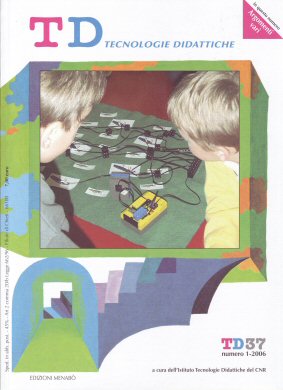Narrative environments for learning
Main Article Content
Abstract
Article Details
Authors who publish with this journal agree to the following terms:
- Authors retain copyright and grant the journal right of first publication with the work simultaneously licensed under a Creative Commons CC BY 4.0 Attribution 4.0 International License.
- Authors are able to enter into separate, additional contractual arrangements for the non-exclusive distribution of the journal's published version of the work (e.g., post it to an institutional repository or publish it in a book), with an acknowledgement of its initial publication in this journal.
- Authors are permitted and encouraged to post their work online (e.g., in institutional repositories or on their website) prior to and during the submission process, as it can lead to productive exchanges, as well as earlier and greater citation of published work (See The Effect of Open Access)
References
Aylett R. (2006), And they both lived happily ever after? Digital stories and learning, in Dettori G., Giannetti T., Paiva A. and Vaz A. (eds.), Technology-mediated narrative environments for learning, Sensesepublishers, Rotterdam NL, pp. 5-25.
Bruner J. (1992), La ricerca del significato, Bollati Boringhieri editore, Torino.
Donald M. (1996), L’evoluzione della mente, Garzanti libri, Milano.
Earp J., Giannetti T. (2006), Narrative- oriented software for the learning of a foreign language – Tools helping young people to develop communication skills, in Dettori G., Giannetti T., Paiva A. and Vaz A. (eds.), Technology-mediated narrative environments for learning, Sensesepublishers, Rotterdam NL, pp. 27-40.
Marsella S., Johnson W. L., LaBore C. M. (2000), Interactive Pedagogical Drama, Proceedings of the 4th International Conference on Autonomous Agents, Agents 2000. Accessibile alla pagina: http://www. isi.edu/isd/carte/proj_parented/
McEwan H. (1997), The functions of narrative and research on teaching, Teaching and Teacher Education, vol.13, n.1, pp.85-92.
Mott B.W., Callaway C.B., Zettlemoyer L.S., Lee S.Y., Lester J.C. (1999), Towards Narrative-Centered Learning Environments, Proceedings of AAAI Fall symposium on Narrative Intelligence. Accessibile alla pagina: http://www-2.cs.cmu.edu/afs/cs /user/michaelm/www/nidocs/Mo ttCallawayEtAl.pdf (marzo ‘06).
Propp V. (1971), Morphology of the folk tale, University of Texas Press.
Ricoeur P. (1981), Hermeneutics and the human sciences, Cambridge, Cambridge University Press.
Scalise Sugiyama M. (2001), Food, forages and folklore: the role of narrative in human subsistence, Evolution and Human Behaviour, n. 22, pp. 221-240.
Sutherland L. (2002), Developing problem solving expertise: the impact of instruction in a question analysis strategy, Learning and Instruction, n. 12, pp. 155-187.
Timchenko O. (2006), Narrative for motivation and meaning making, in G. Dettori, T. Giannetti, Paiva A. and Vaz A. (eds.), Technology-mediated narrative environments for learning, Sensesepublishers, Rotterdam NL, pp. 115-122.
Turner P., Turner S. (2003), Telling tales: understanding the role of narrative in the design of taxonomic software, Design Studies, n. 24, pp. 537-547.

